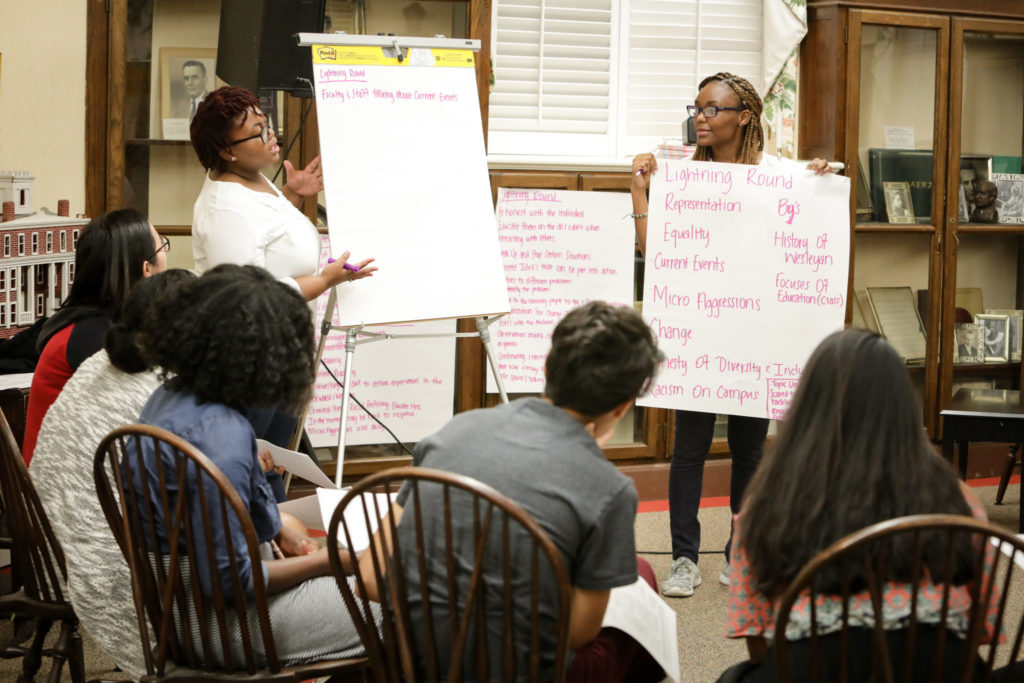
(c) Maryann Bates, [email protected]
What if we structure meetings as collaborative learning events?
“Congratulations on being selected as the Chair of the campus Task Force”, said Julie Morton to her colleague Debra Walsh.
“Thanks, but I’m not sure you won’t regret naming me Chair,” replied Walsh. “I’ve been really disappointed with previous meetings,” continued Walsh. “We’re supposed to generate advice. But most of the time we are just being talked at—with no opportunity to share our thoughts or build on each other’s ideas. I want to change that.”
“Here’s what I propose. We’ll survey faculty and students to identify core issues for discussion. Then we’re going to convene discussions for faculty, students, and staff to work through the issues and develop possible directions for moving forward. I’m going to recruit some of my students who have taken my facilitation class so we can break up these discussion meetings into small interactive groups.”
Morton was taken aback. “But shouldn’t you be using the meetings to disseminate the reports on our programs?”
“Why don’t you provide us with copies of your slides along with the reports? If there are issues in the reports that need discussion, we can explore them to the discussion sessions,” Walsh responded.
Reluctantly Morton agreed and the meetings went forward as Walsh planned. The results were very intriguing, and the campus responses to the Task Force meetings affirmed Walsh’s decision to make them more interactive.
- “The best meeting I’ve attended on campus. I felt like we actually got things done.”
- “Finally, I felt like I made a contribution.”
- “Very impressed with the students’ facilitation abilities. I want to hire them.”
- “Learned things today I never knew about our campus.”
- “Today was a launching pad for many possibilities.”
Many of us have been invited to meetings where we thought we were going to share thoughts with others. Instead of sharing we were talked at. Perhaps we had a chance to ask questions or make a comment. But the discussion was mostly one-directional. There was little room for developing new insights. Why is that? Perhaps it fit the organizers’ purposes for the discussion: the organizers had content they wanted to disseminate. It could be because the organizers hadn’t thought that they might want to learn from and with the participants—and that there might be other discussion models to help make that happen.
Many convenings operate on the model of a presenter who has knowledge or content to share with others. But what if the purpose is to develop new content with a group? Then a different model is needed. If you want your meetings to be opportunities for co-constructing new knowledge, then they need to be interactive. Interactive meetings take facilitation. They require that participants be properly prepared for what’s coming. Participants need to know it’s not going to be a typical panel presentation with Q&A. They should come prepared to share thoughts with others, to listen to others, and to build on ideas together. Participants will need to understand and respect the discussion process.
Campuses could be incubators for collaborative learning events, such as interactive discussion meetings. Unfortunately, we often get stuck in the rut of thinking the only way to have a meeting is to talk at people and offer them a well-honed presentation. What if we try structuring discussion meetings as genuinely collaborative learning events, as open discussions where participants share and develop their thoughts together?
***
“We can see that all the desirable experiences that we cherish or aspire to attain are dependent upon cooperation and interaction with other sentient beings.” – Dalai Lama
This post is part of our “Think About” education series. These posts are based on composites of real-world experiences, with some details changed for the sake of anonymity. New posts appear Wednesday afternoons.



